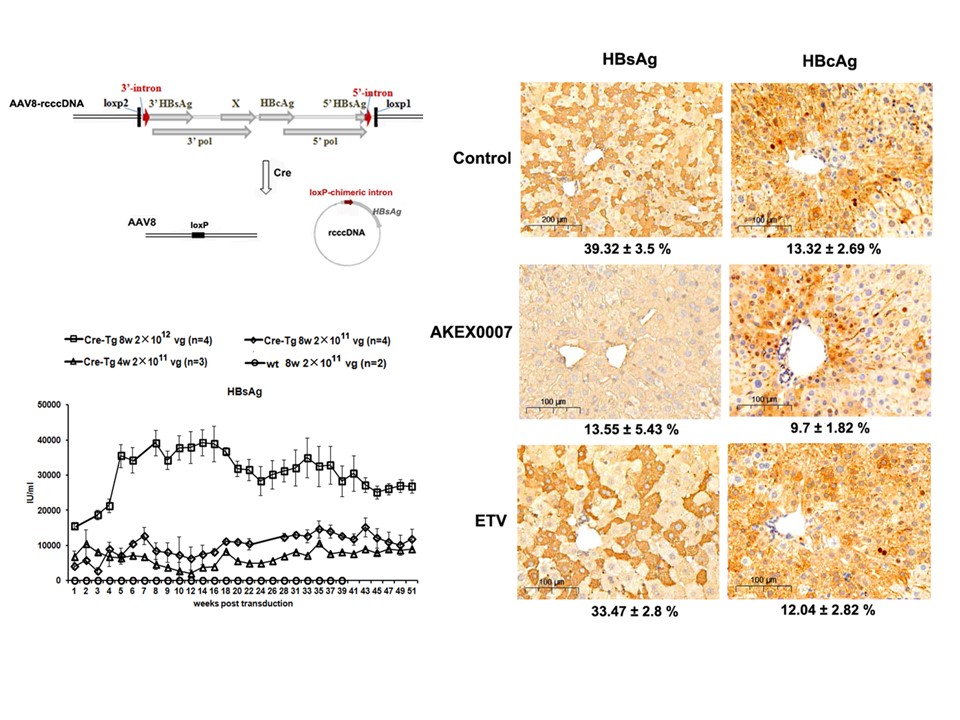Image Collections
- AAV-rcccDNA
- AAV-rcccDNA antiviral treatment
- HBsAg(brown) hematoxylin
- HBcAg(brown)-hematoxylin
The covalently closed circular DNA (cccDNA) of hepatitis B virus (HBV) is critical for viral persistence in vivo. The lack of reliable, characterized and convenient small animal models for studying cccDNA persistence has long been a bottleneck for basic and translational research on HBV cure.A mouse model that can maintain intrahepatic cccDNA is urgently needed.
Through combining the Cre/loxP-mediated recombination and adeno-associated virus (AAV) vector delivery strategy, we establish a novel recombinant cccDNA (rcccDNA) mouse model (AAV-rcccDNA). AAV-rcccDNA mice supported long-term maintenance of intrahepatic rcccDNA. Quantitative PCR could detect the rcccDNA signal throughout the experiment duration (>51 weeks). Within 30 weeks after transduction, the rcccDNA in the liver of mice could be easily detected by Southern blotting. Furthermore, rcccDNA supported persistent serum antigenemia (>72 weeks) and intrahepatic surface and core antigen expression (>51 weeks). Flow cytometry analysis and single-cell RNA sequencing showed that AAV-rcccDNA mice displayed a compromised CD8+ T cell response. Meanwhile, minimal intrahepatic inflammation and fibrosis were observed. Furthermore, two anti-HBV compounds, AKEX0007, a post-transcriptional HBsAg suppressor and Bay 41-4109, a capsid allosteric modulator, were assessed in this AAV-rcccDNA mouse model. The changes of viral markers by these drugs were consistent with their mode of action although neither of them diminished the level of rcccDNA.
Based on Cre/loxP-mediated rcccDNA production strategy, we adopted the AAV vector to establish a novel mouse model with long term maintenance of cccDNA and antigenemia. This mice model recapitulated the immune tolerant state of HBV infection, which will provide a suitable platform for studying cccDNA persistence and developing intervention strategies that would eventually break the tolerance and clear the virus.
